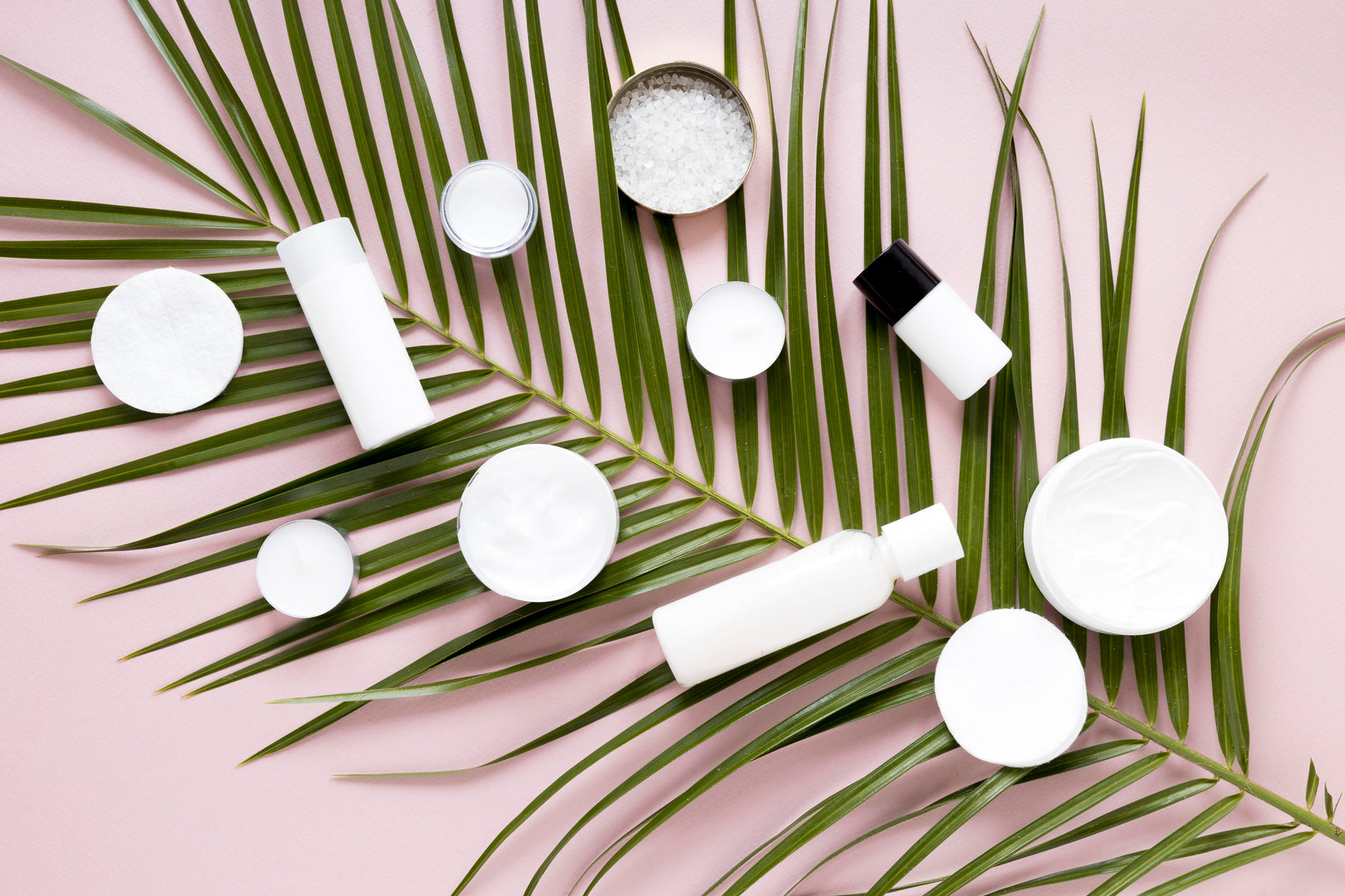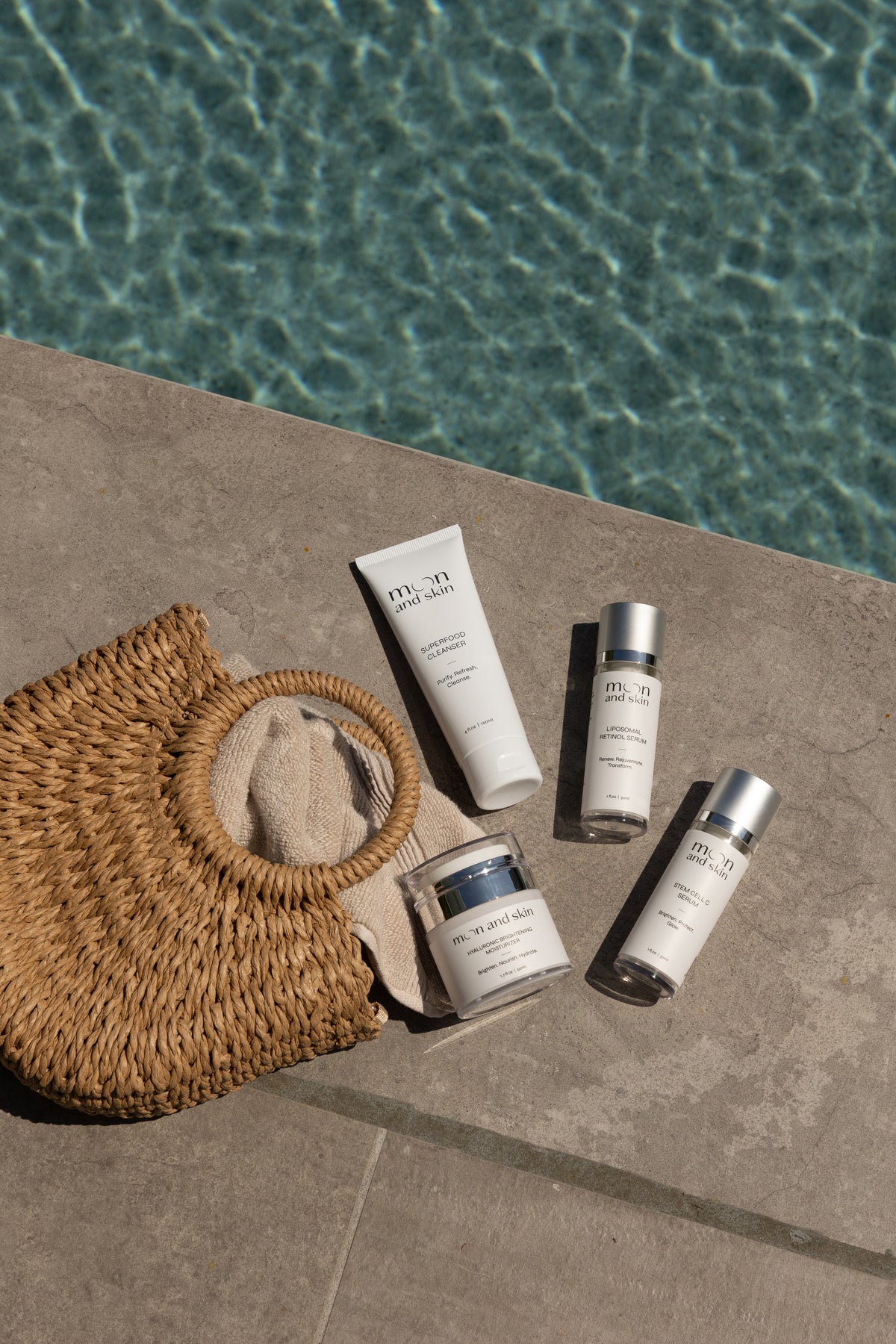Table of Contents
Introduction
Did you know that aloe vera has been revered for centuries as a nature's remedy for skin ailments? This remarkable plant is not just a soothing gel for sunburns; it has a rich history of use in skincare, with its numerous benefits documented across cultures. With the growing trend toward clean beauty, many of us are turning to natural ingredients to nourish our skin, and aloe vera stands out as a superstar.
In this post, we will explore the various types of aloe vera plants, their unique properties, and how to choose the best one for your facial care. If you've ever asked, "Which aloe vera plant is best for face?" you've come to the right place. Together, we'll uncover the magic of aloe vera—its benefits, uses, and how to incorporate it into your skincare routine.
At Moon and Skin, we believe that skincare should be both effective and thoughtful. Our mission is to celebrate and support your skin through every phase of life with clean, nature-friendly products. So, as we dive into the world of aloe vera, rest assured that our focus will remain on empowering you with knowledge for your personal skincare journey.
The Wonders of Aloe Vera
Aloe vera is a succulent plant that thrives in warm climates, known for its thick, fleshy leaves filled with a cooling gel. This gel is rich in vitamins, minerals, enzymes, and amino acids, making it a powerhouse for skin health. But not all aloe vera plants are created equal when it comes to skincare benefits.
Common Types of Aloe Vera
- Aloe Barbadensis Miller: Often simply referred to as aloe vera, this species is the most commonly used for skincare. It has a high content of the soothing gel that is effective for hydration, wound healing, and anti-inflammatory properties.
- Aloe Arborescens: Known for its medicinal properties, this variety is often used in holistic treatments. It's rich in antioxidants and is believed to enhance skin health.
- Aloe Ferox: Native to South Africa, this aloe species contains a higher concentration of certain compounds that may help with skin rejuvenation and anti-aging.
- Aloe Perryi: This variant is gaining popularity due to its rich nutrient profile. It has antioxidant and anti-inflammatory properties, making it suitable for sensitive skin.
- Aloe Caesia: With its striking appearance and beautiful flowers, Aloe Caesia is not only aesthetically pleasing but also packed with skin-nourishing properties.
Why Aloe Vera?
The appeal of aloe vera lies in its versatility and efficacy. Here are some key benefits of using aloe vera on your face:
- Hydration: Aloe vera is composed of about 99% water, making it an excellent natural moisturizer. It helps to hydrate the skin without leaving a greasy residue.
- Healing Power: The gel can aid in healing minor cuts, burns, and acne scars due to its wound-healing properties.
- Anti-inflammatory: Aloe vera is known for its soothing properties, making it effective in reducing redness and irritation associated with acne or sunburn.
- Antioxidant Protection: With its rich content of vitamins C and E, aloe vera helps protect the skin from environmental damage and free radicals.
- Natural Exfoliant: Aloe vera contains enzymes that can gently exfoliate the skin, promoting a brighter complexion.
Choosing the Right Aloe Vera Plant for Your Face
When deciding which aloe vera plant is best for your face, consider the following factors:
1. Skin Type
Understanding your skin type is crucial. If you have oily or acne-prone skin, Aloe Barbadensis Miller is a fantastic choice due to its lightweight gel that absorbs quickly. For dry or sensitive skin, Aloe Ferox or Aloe Perryi can provide deeper hydration and anti-inflammatory benefits.
2. Purpose
Are you looking to hydrate, heal, or soothe your skin? If your primary goal is hydration, Aloe Barbadensis Miller will serve you well. For healing purposes, especially with stubborn acne scars or minor wounds, Aloe Arborescens might be the best option.
3. Availability and Quality
Always choose high-quality aloe products. At Moon and Skin, we emphasize clean, thoughtful formulations. For your skincare regime, consider our Hyaluronic Brightening Moisturizer, which incorporates the hydrating properties of hyaluronic acid along with aloe vera to keep your skin supple and bright. Explore our moisturizer here.
4. Product Formulation
While using raw aloe vera is beneficial, many skincare products combine aloe with other active ingredients for enhanced effects. Look for products that prioritize aloe vera as a primary ingredient.
How to Use Aloe Vera on Your Face
Integrating aloe vera into your skincare routine is easy. Here are some effective ways to use it:
1. Direct Application
- Cut a fresh aloe vera leaf and extract the gel.
- Apply the gel directly to your face, focusing on areas that need hydration or healing.
- Allow it to absorb for 20-30 minutes before rinsing off with cool water.
2. Aloe Vera Mask
Create an aloe vera mask by blending the gel with other beneficial ingredients such as honey or yogurt. This can enhance its hydrating and antibacterial properties.
3. Incorporate into Your Routine
For a more effective approach, consider using products that contain aloe vera. Our Superfood Cleanser is designed to gently cleanse while nourishing your skin, making it an ideal first step in your routine. Check it out here.
4. Overnight Treatment
You can apply aloe vera gel before bed as a soothing overnight treatment. Its gentle nature means it can safely remain on your skin for extended periods without irritation.
The Science Behind Aloe Vera
Understanding the scientific benefits of aloe vera can help you appreciate why this plant is beloved in skincare.
Nutrient Profile
- Vitamins: Aloe vera contains vitamins A, C, and E, which are vital for skin health. They work as antioxidants to combat free radical damage.
- Amino Acids: Aloe vera provides 20 of the 22 required amino acids, essential for skin repair and regeneration.
- Polysaccharides: These compounds help retain moisture and can enhance skin elasticity.
Healing Mechanism
Aloe vera promotes wound healing through several mechanisms, including:
- Collagen Production: The gel encourages collagen synthesis, which helps improve skin texture and reduce scarring.
- Anti-inflammatory Properties: Aloe contains compounds such as acemannan that reduce inflammation, making it effective for conditions like acne and rosacea.
- Antimicrobial Action: Its natural antimicrobial properties can help prevent infections in minor cuts and abrasions.
Benefits of Aloe Vera for Specific Skin Concerns
Acne
Aloe vera can be beneficial for acne-prone skin due to its anti-inflammatory and antibacterial properties. Using our Liposomal Retinol Serum alongside aloe vera can help target acne while minimizing irritation. Learn more about our retinol serum here.
Sunburn
If you've had a day in the sun that left your skin feeling burnt, aloe vera can provide instant relief. Its cooling effect helps soothe irritation and redness, allowing for quicker recovery.
Dry Skin
For those struggling with dry skin, regularly incorporating aloe vera can help restore moisture levels. Combine aloe with a rich moisturizer like our Hyaluronic Brightening Moisturizer for the best results.
Anti-Aging
The antioxidants found in aloe vera help combat signs of aging by protecting the skin from damage caused by environmental stressors. Regular use can improve skin texture and promote a youthful appearance.
Safety and Side Effects
While aloe vera is generally safe for most people, there are a few considerations:
- Patch Test: Always perform a patch test before using aloe vera on your face, especially if you have sensitive skin.
- Allergic Reactions: Some individuals may experience mild irritation or allergic reactions. If you experience any adverse effects, discontinue use immediately.
- Consult a Dermatologist: If you have concerns about your skin or are considering using aloe for specific conditions, consulting a dermatologist is advisable.
Conclusion
Aloe vera is a versatile and powerful plant that can offer a wealth of benefits for your skin. By choosing the right type of aloe and incorporating it thoughtfully into your skincare routine, you can harness its healing properties to enhance your skin's health and appearance.
At Moon and Skin, we are committed to providing clean, thoughtful skincare that empowers you to embrace your skin's journey. We invite you to explore our Bundle & Save collection to experience our best-selling products, including those infused with aloe vera. Discover the collection here.
By blending nature's brilliance with our innovative formulations, we can help you achieve the glowing, healthy skin you deserve.
FAQ
Q: Can I leave aloe vera on my face overnight?
A: Yes, aloe vera is gentle enough to leave on overnight, providing hydration and soothing benefits.
Q: Is it safe to use fresh aloe vera directly on my face?
A: Generally, yes! Just ensure to perform a patch test first to avoid any potential reactions.
Q: Which aloe vera plant is best for sensitive skin?
A: Aloe Barbadensis Miller is often recommended for sensitive skin due to its soothing properties.
Q: How often can I use aloe vera on my face?
A: You can use aloe vera daily, either in its raw form or through products that contain it.
Q: Can aloe vera help with acne scars?
A: Yes, aloe vera promotes healing and can help reduce the appearance of acne scars over time.
With continued use and the right products, you're well on your way to radiant, healthy skin!







